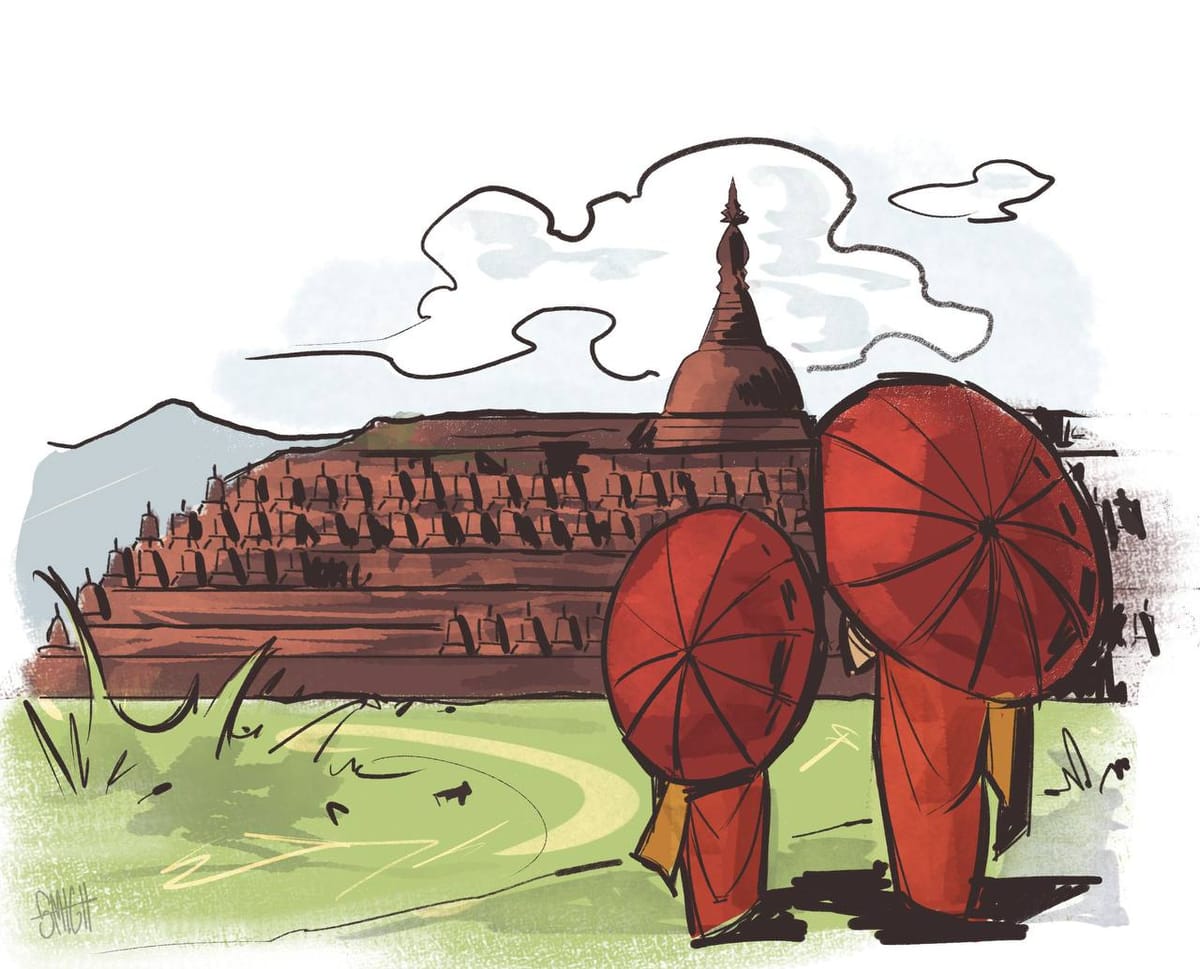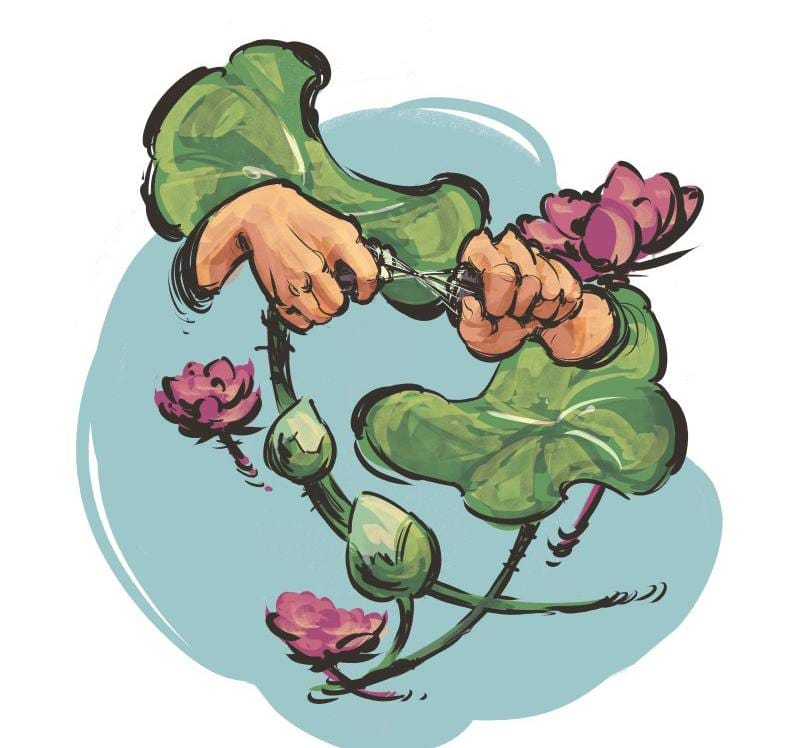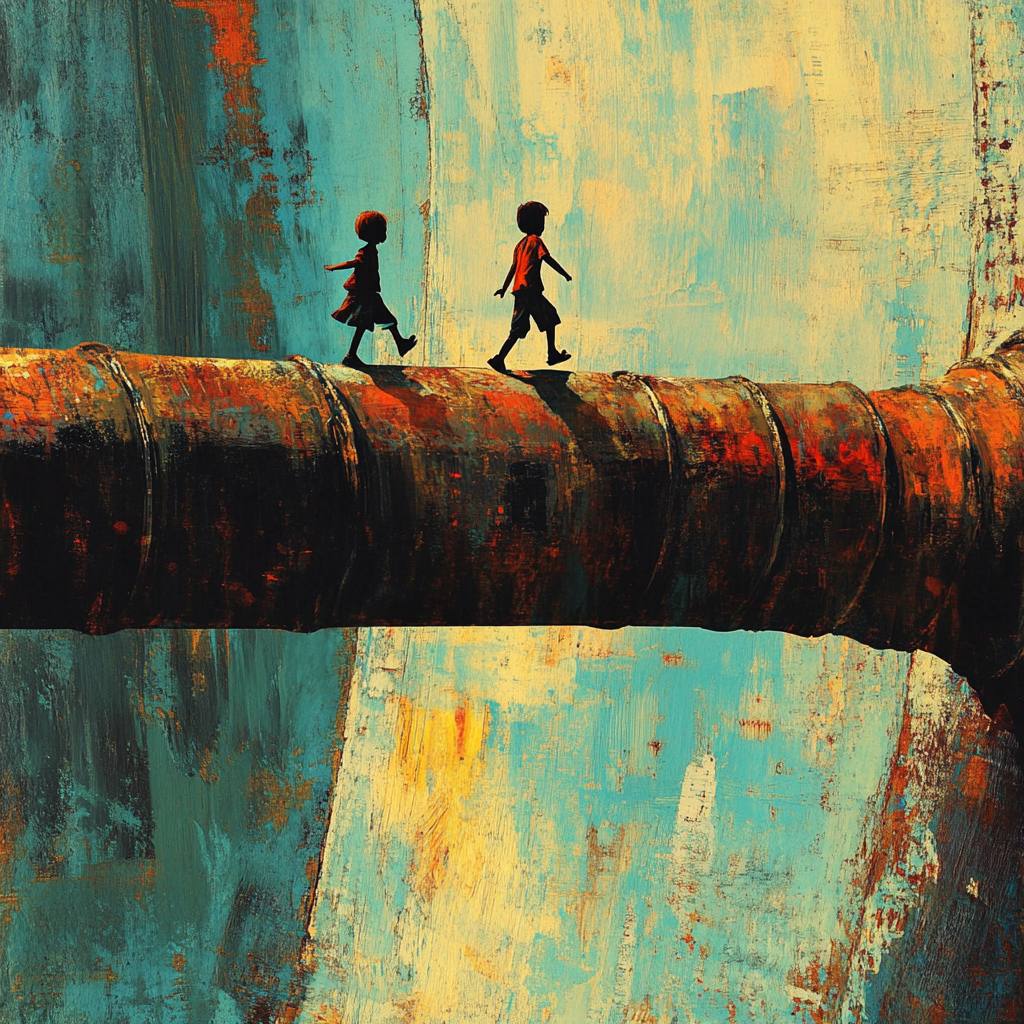
Hidden in the mist-shrouded hills of Myanmar's Rakhine State lies one of Southeast Asia's best-kept secrets: Mrauk-U. Once the dazzling capital of the Arakanese Kingdom, this ancient city thrived between the 15th and 18th centuries, a period marked by immense power and cultural splendor. Today, it stands in the shadow of more famous sites like Bagan, yet Mrauk-U's story is no less grand. It is a tale of a kingdom that rose to prominence as a maritime power, blending cultures and erecting stone temples that have withstood the test of time.
A Coastal Kingdom of Global Influence
Mrauk-U's dramatic rise began in 1430 when King Min Saw Mon, with the help of the Bengal Sultanate, established it as the capital of a resurgent Arakanese Kingdom. Strategically situated between the rising Burmese empires to the east and the vast Bengal Sultanate to the west, Mrauk-U's location on the Bay of Bengal made it a key player in global trade.
The city quickly became a bustling center of commerce, drawing merchants from India, the Middle East, Southeast Asia, and Europe. Portuguese, Dutch, and Arab traders flocked to its ports, eager to exchange spices, rice, gems, and textiles. This wealth propelled the kingdom to heights of influence that extended well beyond its borders.
Where Buddhism Embraced Islam
Mrauk-U's success wasn't built on trade alone—it was a cultural crossroads where Buddhism and Islam intermingled in fascinating ways. Though primarily a Buddhist kingdom, its rulers maintained strong ties with the Muslim Bengal Sultanate, leading to a unique blend of religious and cultural traditions.
It wasn't uncommon for Mrauk-U's kings to hold Muslim titles alongside their Buddhist ones, and the kingdom's coins were inscribed with Persian script. Mosques and Buddhist temples existed side by side, their architecture reflecting influences from both South and Southeast Asia. In an age often defined by division, Mrauk-U stood as a beacon of religious tolerance and diversity.
The Stone Temples: Timeless and Majestic
While Mrauk-U's trade and cultural dynamism set it apart, it's the kingdom's architectural legacy that truly captivates. Unlike the sun-baked brick temples of Bagan, Mrauk-U's temples were carved from stone to withstand the relentless monsoon rains. This choice gave them a fortress-like appearance, with thick walls and labyrinthine interiors that echo tales of both spiritual devotion and defense.
The most famous of these temples is the Shite-thaung, or "Temple of 80,000 Buddhas," built by King Min Bin in the 16th century. Inside, its maze of tunnels is adorned with exquisite carvings, statues, and relics. Nearby stands the Htukkanthein Temple, designed as both a sanctuary and a stronghold, its thick walls and narrow windows telling a story of a time when invasions and turmoil were as much a part of life as prayer.
The Fall of a Great Kingdom
Like all great empires, Mrauk-U's golden age came to an end. By the late 17th century, the kingdom was under pressure from both the Mughal Empire to the west and the Konbaung Dynasty in Burma. Shifting trade routes, internal conflicts, and regional wars weakened the kingdom, setting the stage for its eventual downfall.
In 1784, Burmese King Bodawpaya invaded Mrauk-U, capturing the city and bringing the Arakanese Kingdom to an end. With its fall, much of Mrauk-U's history was lost to time, and the kingdom faded into obscurity.
A Hidden Gem in Turmoil
Today, Mrauk-U is not just an archaeological treasure—it's a city caught in the crossfire of modern conflict. Since Myanmar's military coup, the sound of gunfire and artillery has replaced the peaceful atmosphere that once surrounded the ancient ruins. The ongoing conflict between the Myanmar military and the Arakan Army has driven locals from their homes, with many fleeing to temporary camps set up near the ancient temples.
Despite these challenges, efforts to have Mrauk-U recognized as a UNESCO World Heritage Site continue. In 2019, a draft proposal was submitted, though progress has been severely disrupted by the political situation in Myanmar.
A Future Yet Unwritten
For the few adventurous travelers who make it to this remote corner of Myanmar, Mrauk-U offers an unforgettable journey into a lost kingdom. Its mist-covered hills, ancient stone temples, and rich history create an atmosphere of mystery and wonder.
While Mrauk-U may not yet have the fame of Bagan or Angkor Wat, its time may yet come. Efforts to restore its temples and preserve its cultural heritage are ongoing, despite the challenges. One day, Mrauk-U may take its rightful place as one of Southeast Asia's great historical treasures. For now, it remains a place for explorers seeking history and beauty off the beaten path—a city where the echoes of a once-great empire still linger in the air, waiting to be rediscovered.
Read More:
 Build Myanmar - MediaY3A
Build Myanmar - MediaY3A
 Build Myanmar - MediaY3A
Build Myanmar - MediaY3A
Build Myanmar-Media: Insights – Empowering Myanmar Youth, Culture, and Innovation
Build Myanmar-Media Insights brings you in-depth articles that cover the intersection of Myanmar’s rich culture, youth empowerment, and the latest developments in technology and business. Stay informed and inspired as we rebuild Myanmar through knowledge and innovation.
📅 New content every week, featuring stories that connect Myanmar’s heritage with its future.
📰 Read on:
- Website: https://www.buildmyanmarmedia.com/
- Facebook: https://www.facebook.com/buildmyanmar
- YouTube: https://youtube.com/@buildmyanmarmedia
- Telegram: https://t.me/+6_0G6CLwrwMwZTIx
- Inquiry: info@buildmyanmar.org
#BuildMyanmararticles #Myanmararticles #MyanmarUpdates #MyanmarNews #BuildMyanmarMedia #MyanmarHeritage #Insights #Media #MyanmarMedia
Sign up for Build Myanmar - Media
Myanmar's leading Media Brand focusing on rebuilding Myanmar. We cover emerging tech, youth development and market insights.
No spam. Unsubscribe anytime.